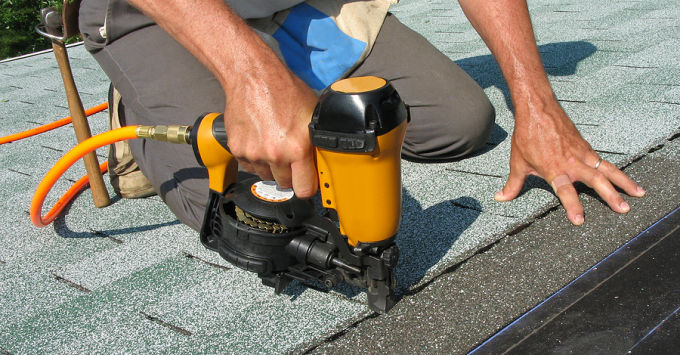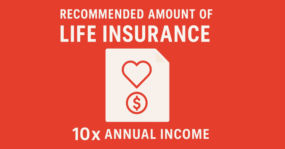
When the time comes to replace your roof, many homeowners find themselves weighing several choices. Roofing is more than shingles or tiles; it is about protecting your home, controlling costs, and the effect each roofing option has on your Homeowners Insurance. While the right choice depends on budget, climate, and personal preference, it is helpful to understand the main types of roofs, their long-term value, and how insurers view them.
The Big Four Roofing Options
Most homes in the United States feature one of four roof types: asphalt shingles, tile, metal sheets, or metal shingles. Each brings different benefits and trade-offs.
- Asphalt Shingles
- Initial Cost: Asphalt shingles are generally the most affordable upfront. Installation is widely available, which can keep labor costs down.
- Long-Term Value: These roofs often have shorter lifespans, usually in the 15–30 year range, depending on the quality and climate. They may need more frequent repairs or replacement.
- Insurance Impact: Because asphalt shingles are common, many insurers rate them as standard risk. However, in areas with heavy storms or hail, insurers may note their lower durability compared with stronger materials.
- Tile Roofs
- Initial Cost: Tile roofs, whether clay or concrete, are among the most expensive to install. They require specialized labor, and the weight often demands a strong roof frame.
- Long-Term Value: While the upfront cost is high, tile roofs may last 50 years or more if maintained. They resist fire and heat well, making them popular in hot, dry climates.
- Insurance Impact: Insurers often recognize tile’s long life and resistance to fire. That said, tiles can break during storms or when struck by falling branches, and repairs can be costly. In some cases, this can influence how a policy is priced.
- Metal Sheets
- Initial Cost: Sheet metal roofing typically falls in the mid-to-high range. Prices vary based on the type of metal, with steel and aluminum being common.
- Long-Term Value: Metal sheets are known for durability, often lasting 40 years or longer. They resist fire, shed snow, and may perform well in high winds.
- Insurance Impact: Many insurers see metal sheets as a lower risk because of their fire resistance and strength. Depending on the region, this could mean lower premiums.
- Metal Shingles
- Initial Cost: Metal shingles mimic the look of traditional shingles but use durable metal. Costs are usually higher than asphalt but often less than tile.
- Long-Term Value: Like sheet metal, they can last several decades with proper maintenance. They may also offer better impact resistance than asphalt.
- Insurance Impact: Insurers often view metal shingles in a similar way to sheet metal roofing, noting their durability and fire resistance.
Short-Term vs. Long-Term Costs
When comparing roof types, think about more than the installation price:
- Upfront Investment
- Asphalt: Low
- Tile: High
- Metal Sheets: Mid-to-high
- Metal Shingles: Mid-to-high
- Expected Lifespan
- Asphalt: 15–30 years
- Tile: 50+ years
- Metal Sheets: 40+ years
- Metal Shingles: 40+ years
- Maintenance
- Asphalt: May need frequent replacement of sections
- Tile: Repairs can be tricky and costly
- Metal Sheets: Typically lower maintenance
- Metal Shingles: Moderate maintenance
While asphalt seems like the most budget-friendly choice, a homeowner who plans to stay in their house for decades may find tile or metal worth the higher upfront cost.
How Insurance Plays a Role
Your Homeowners Insurance is partly based on how well your home can handle the unexpected. A roof is central to this calculation. Some general factors insurers may consider include:
- Durability Against Weather: Roofs that hold up to wind, hail, or heavy snow may be rated more favorably.
- Fire Resistance: Tile and metal roofs often score better here than asphalt.
- Repair Costs: Even if a roof is strong, expensive repairs can influence insurance rates. For example, replacing broken tiles may cost more than patching asphalt.
- Local Risks: Insurers often look at regional weather. A metal roof in a hurricane zone may be seen differently than one in a mild climate.
It is important to note that coverage and discounts can vary by insurer and location. A friendly conversation with your insurance agent can help clarify how your chosen roof type could affect your premium.
Questions To Ask Before Choosing
When deciding on a roof, it may help to ask yourself these questions:
- How long do I plan to stay in this home?
- Am I prepared for the higher upfront cost of a roof with a longer lifespan?
- Does my region face frequent storms, hail, or wildfires?
- How would this roof type likely affect my Homeowners Insurance?
- Do I have access to skilled contractors for installation and repair?
Balancing Cost, Value, and Protection
Replacing a roof is not only about style; it is about balancing short-term savings with long-term protection. A homeowner in a storm-prone area may lean toward metal for its durability, while someone in a hot, dry region may prefer tile for its fire resistance. For others, asphalt may be the practical choice due to its lower price.
Insurance is one more piece of the puzzle. While some roof types may result in lower premiums, this depends on the insurer, the policy, and the specific risks in your area.
Final Thoughts
A new roof is one of the biggest home projects you may face. Choosing between asphalt, tile, or metal is not a simple matter of looks or cost. It is about weighing how long you expect to stay in the home, what weather you need to prepare for, and how your Homeowners Insurance may view the risk.
Taking time to compare options and asking your insurance agent how each choice could affect your coverage can help you make a decision that protects both your home and your budget for years to come.



